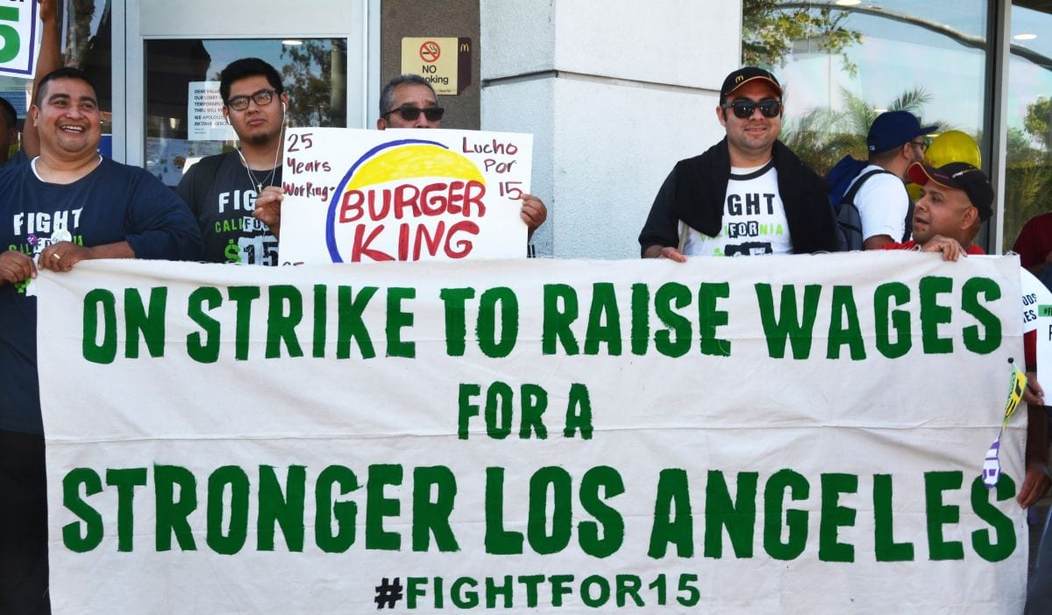The first academic study looking at the $15 an hour Seattle minimum wage shows mixed results for workers.
While wages rose roughly $6 a week on average, hours worked fell. Most worrisome was that about 1.2% of those workers lost their jobs.
So what did they find? People are getting paid a higher wage — and yet, earnings didn’t rise much, because people are also working less. People who made less than $11 an hour before the law took effect saw, on average, a modest bump in their paycheck (about $72 every three months). The median number of hours worked fell by about four hours per quarter.
If you can make slightly more money by working slightly fewer hours, who wouldn’t take that deal? The trouble is that this is the average effect. If the cutbacks in hours worked are “lumpy” — if some people saw big reductions, while others saw little or none — then the people whose hours were reduced a lot could well be worse off, while the people who got the wage hikes and the same number of hours might be substantially better off. This is particularly true if one of those “lumps” consists of people who become unemployed entirely.
Which it seems to. According to the study, the share of those low-wage workers who were still employed after the law took effect fell by 1.2 percent. That’s not Great Depression-level unemployment by any means. And some of it could consist of people who would, say, rather be home with their kids, and who no longer need to work because their partner just got a substantial raise thanks to Seattle’s higher minimum wage. However: 1.2 percent is not nothing. And given that it’s not really all that easy to support a family on $11 an hour in Seattle, I’m pretty skeptical that this represents a lot of voluntary unemployment. There’s also evidence that about 3 percent of previous workers had to look for work outside the city of Seattle.
This matters because unemployment matters. Long-term unemployment tends to make people permanently unhappy even when their basic material needs are taken care of. So substantial and permanent declines in the share of workers who are employed is a huge cost, and I’d want to see some pretty big benefits to justify it.
IBD quotes the Washington Post on the study:
In comments that sounded as if they came straight out of an Econ 101 text, the Post concluded that “Increasing the minimum wage increases the costs of hiring workers. As a result, employers must accept reduced margins or customers must pay steeper prices. If employers cannot stay in business while paying their staff more, they will either hire fewer people or give their workers fewer hours. As a result, even if wages per hour increase workers’ total earning could decline.”
Dead on. That’s exactly what happened. And as University of Washington economist Jacob Vigdor, one of the authors of the Seattle study, noted, some businesses simply avoid paying the minimum-wage tax altogether by automating and letting low-end, unskilled workers go — as is now happening in some fast-food chains and at supermarkets.
Note that this is only the first incremental increase in the wage — from $9.50 to $11 an hour. It won’t be until 2020 when the full force of the increase in minimum wage will be felt. Between now and then, businesses will do what they have to to survive: employ fewer workers, raise prices, or get out of town.
None of this bodes well for the poor or lower middle class who need these jobs to gain valuable experience. Unfortunately, by the time the wage is fully adopted, there probably won’t be many minimum wage jobs to be had.
Cities and states that haven’t joined in the “fight for 15” movement may want to slow down and examine the data in this study before rushing ahead.










Join the conversation as a VIP Member